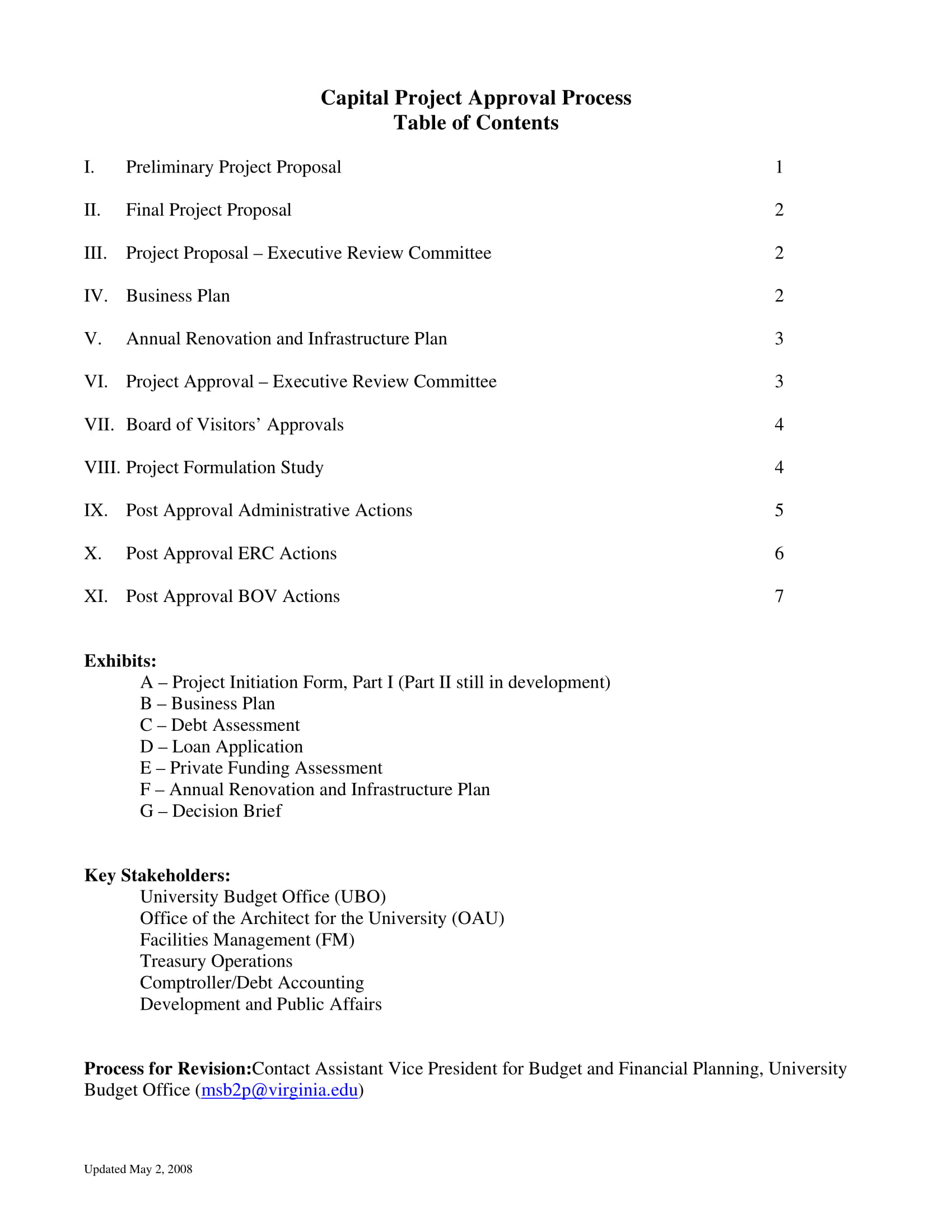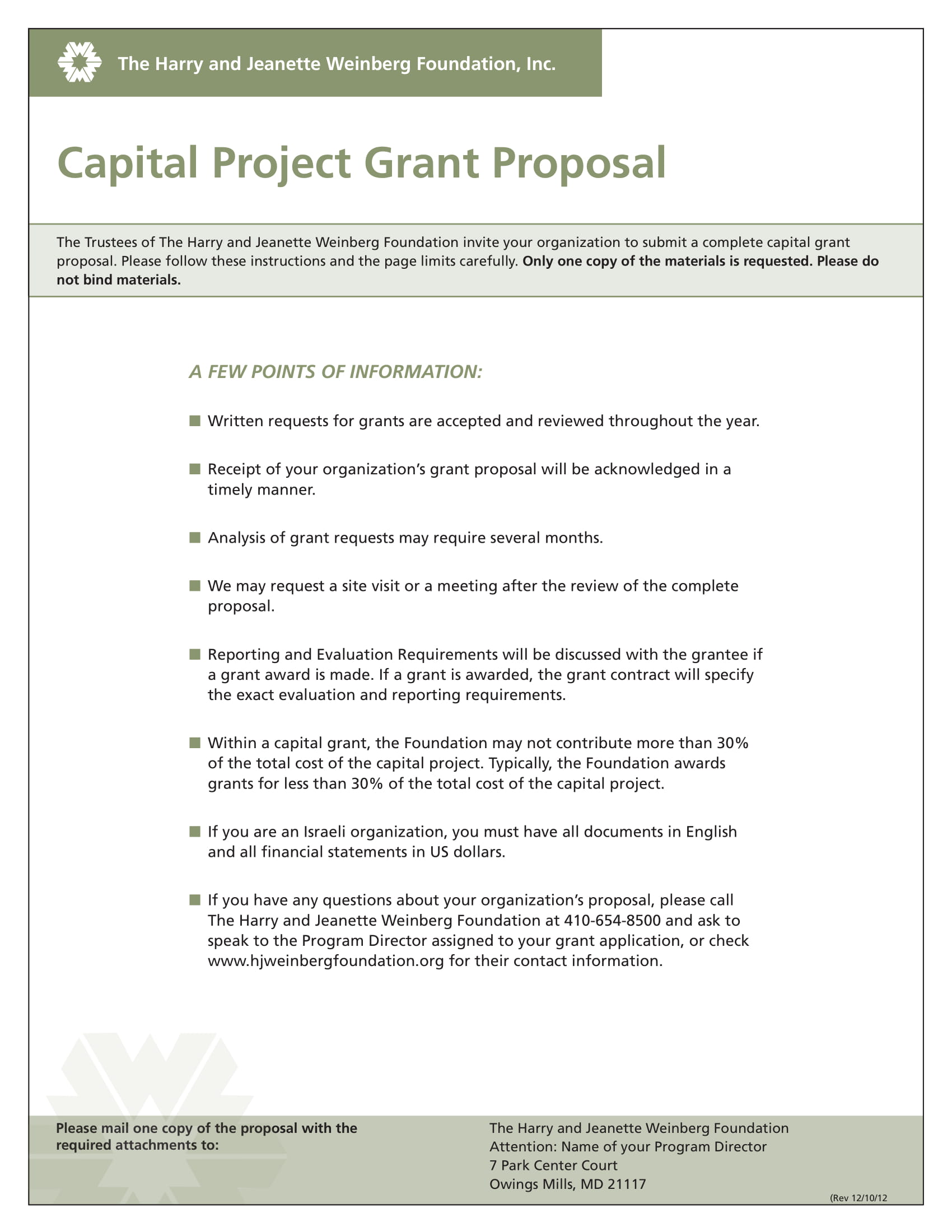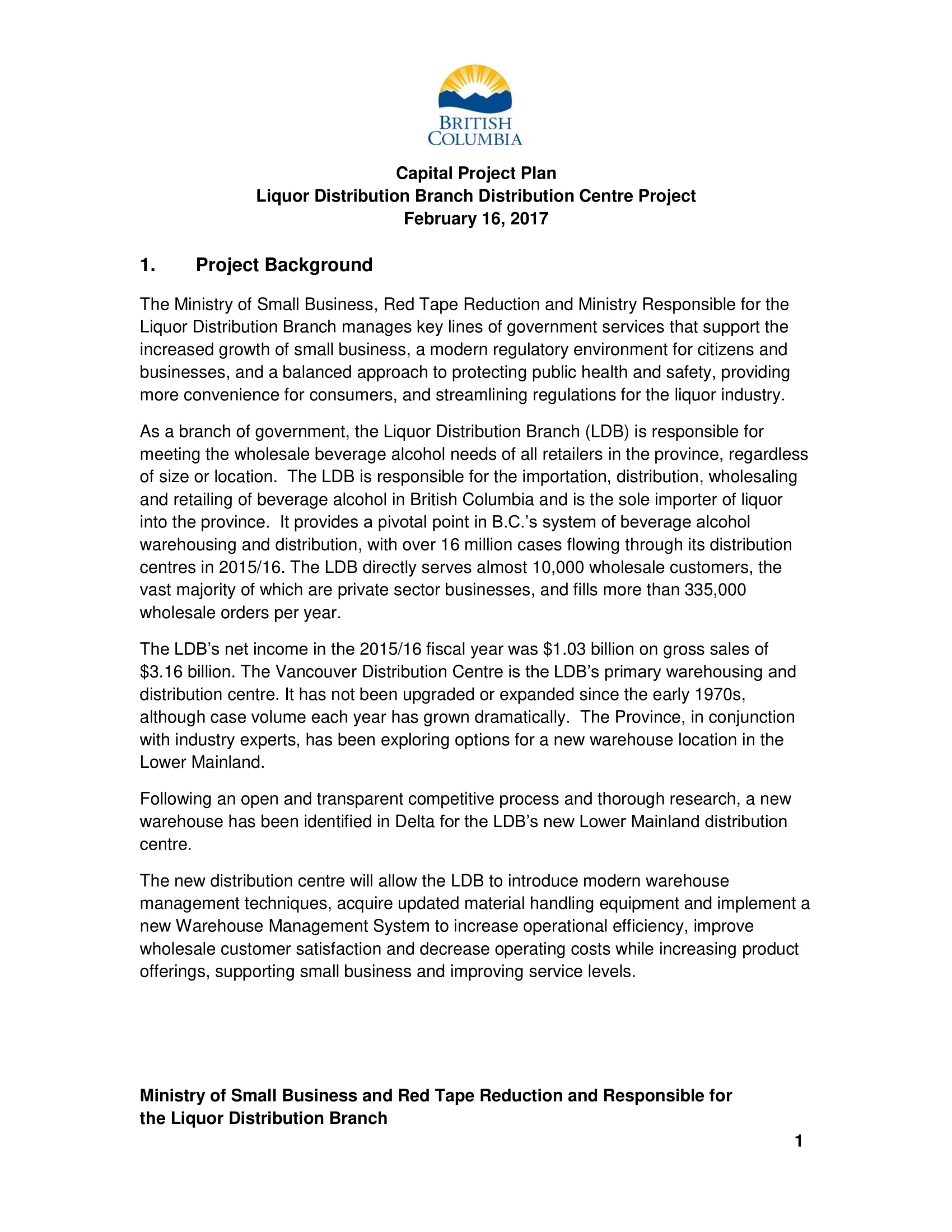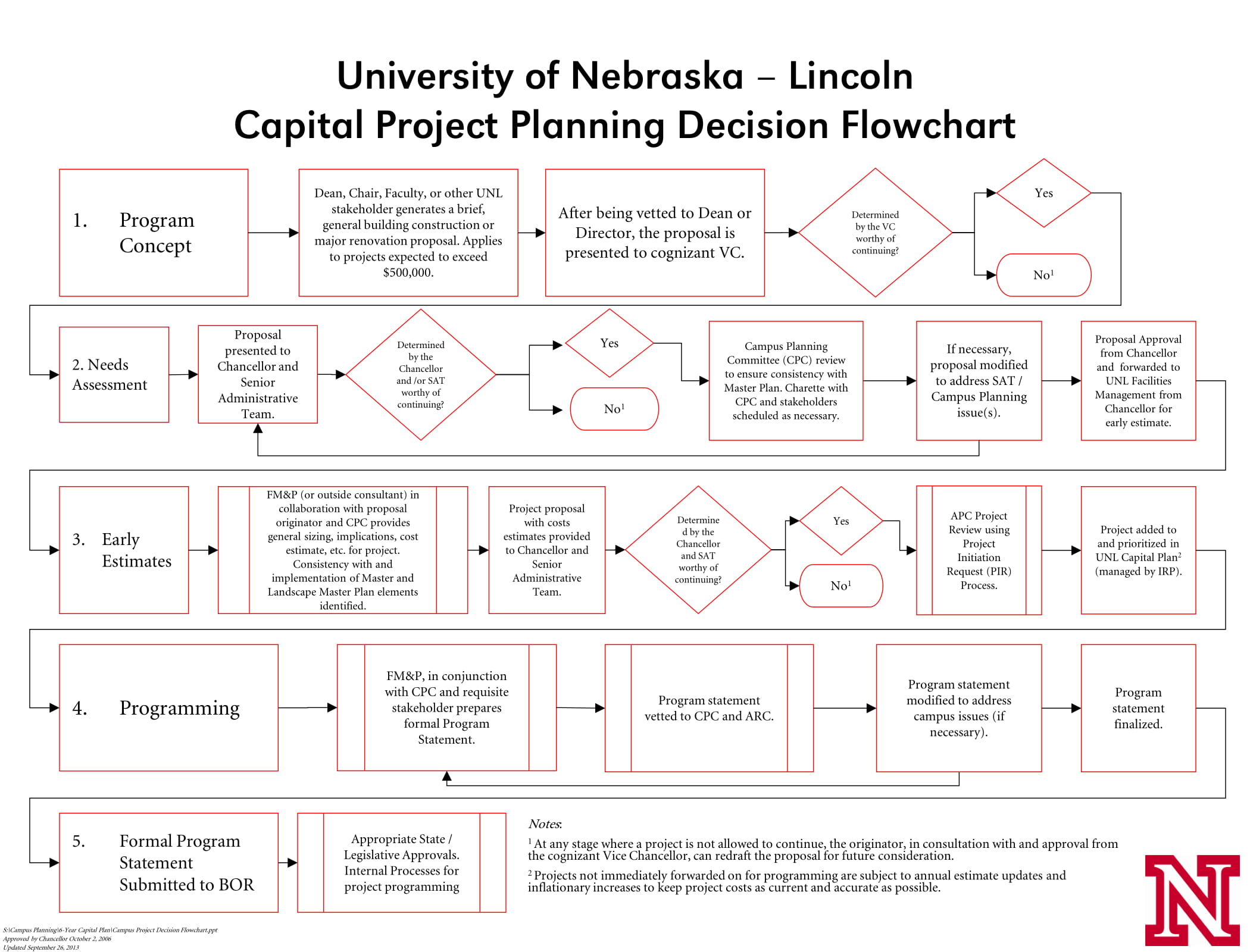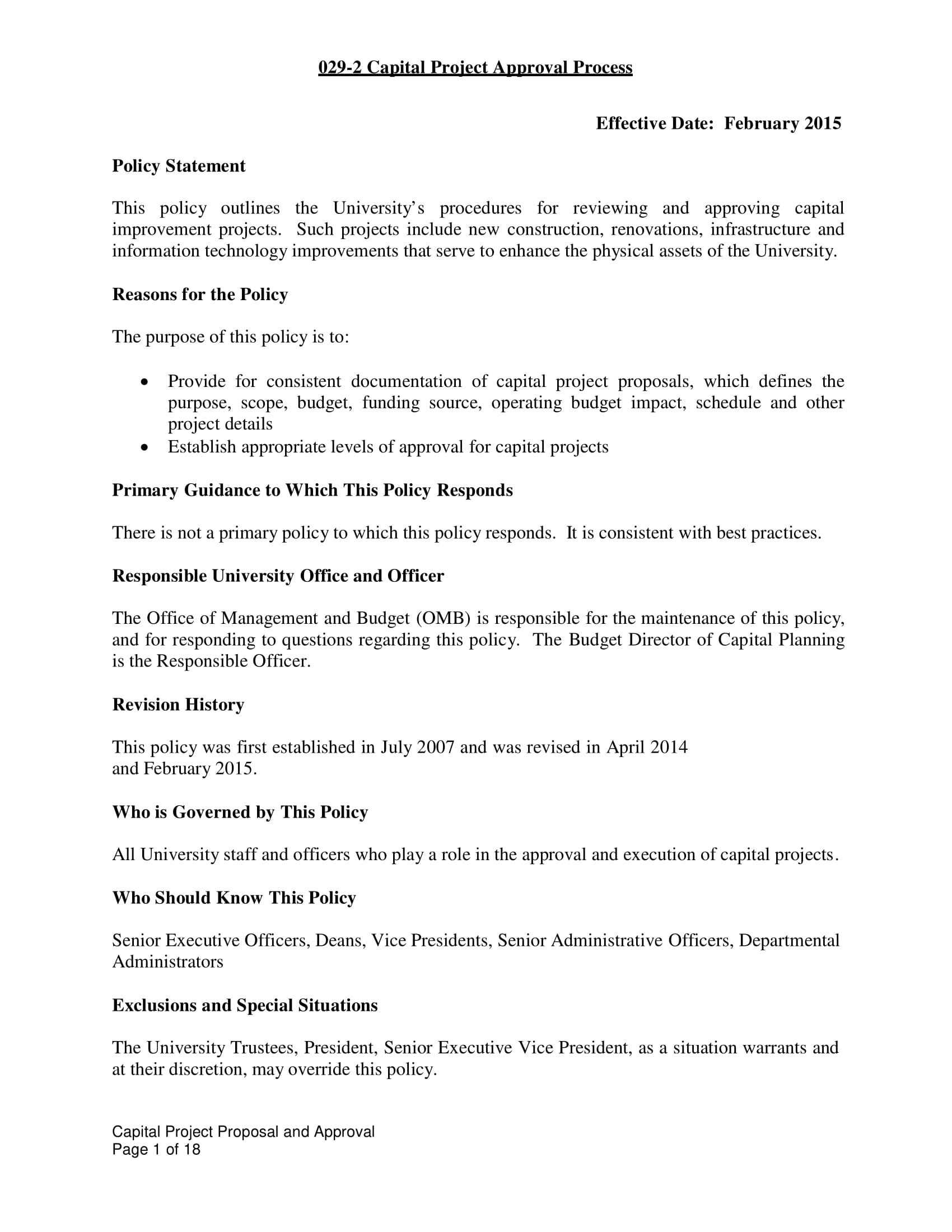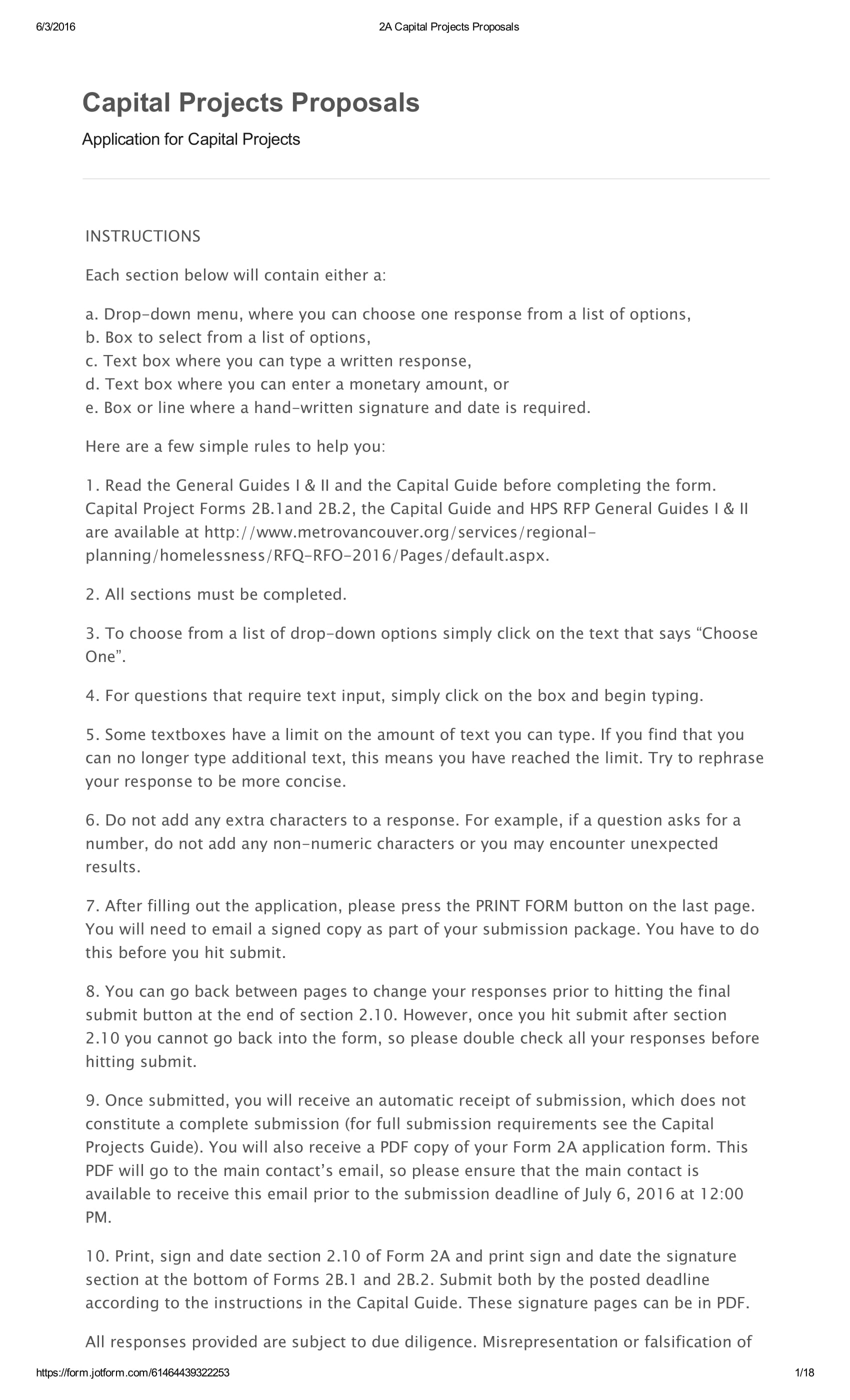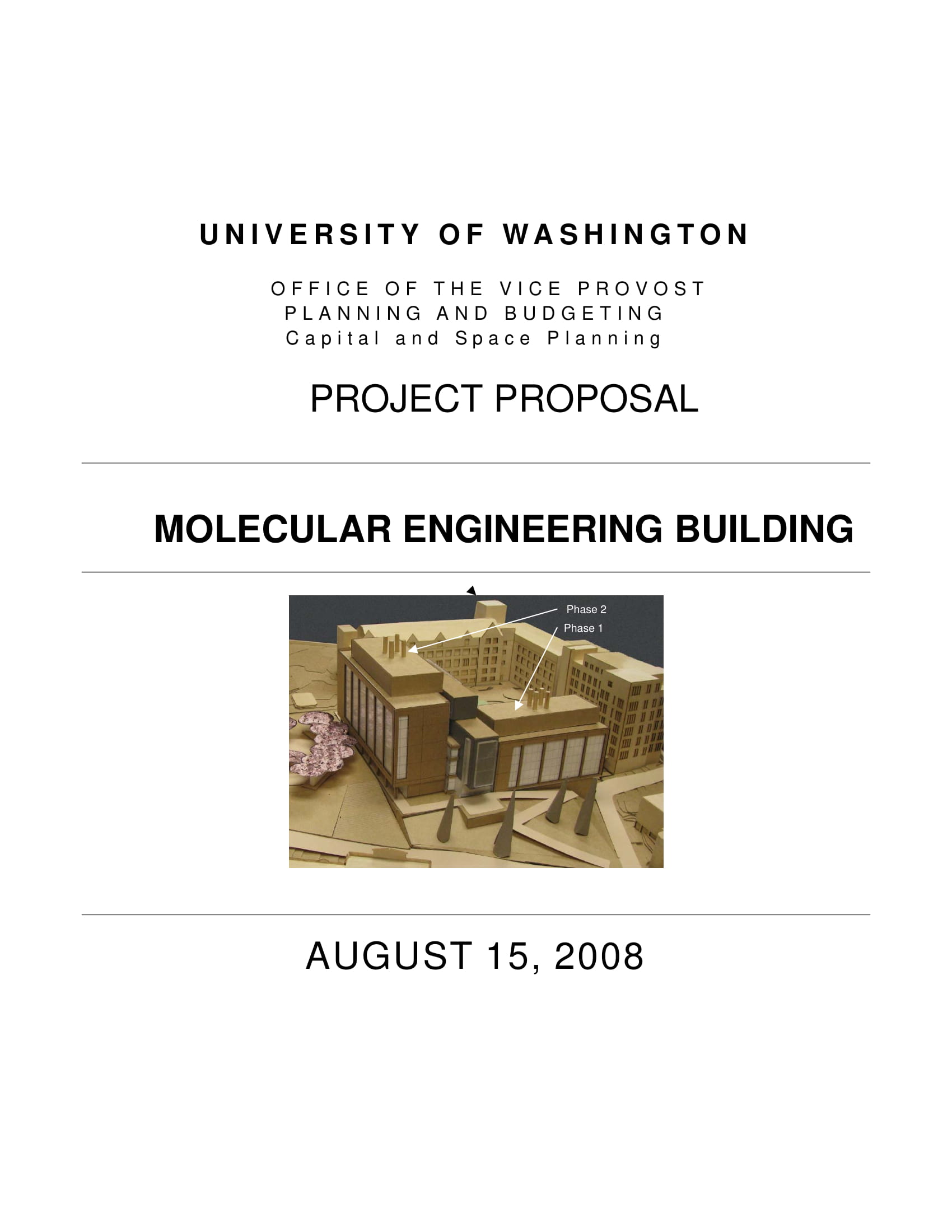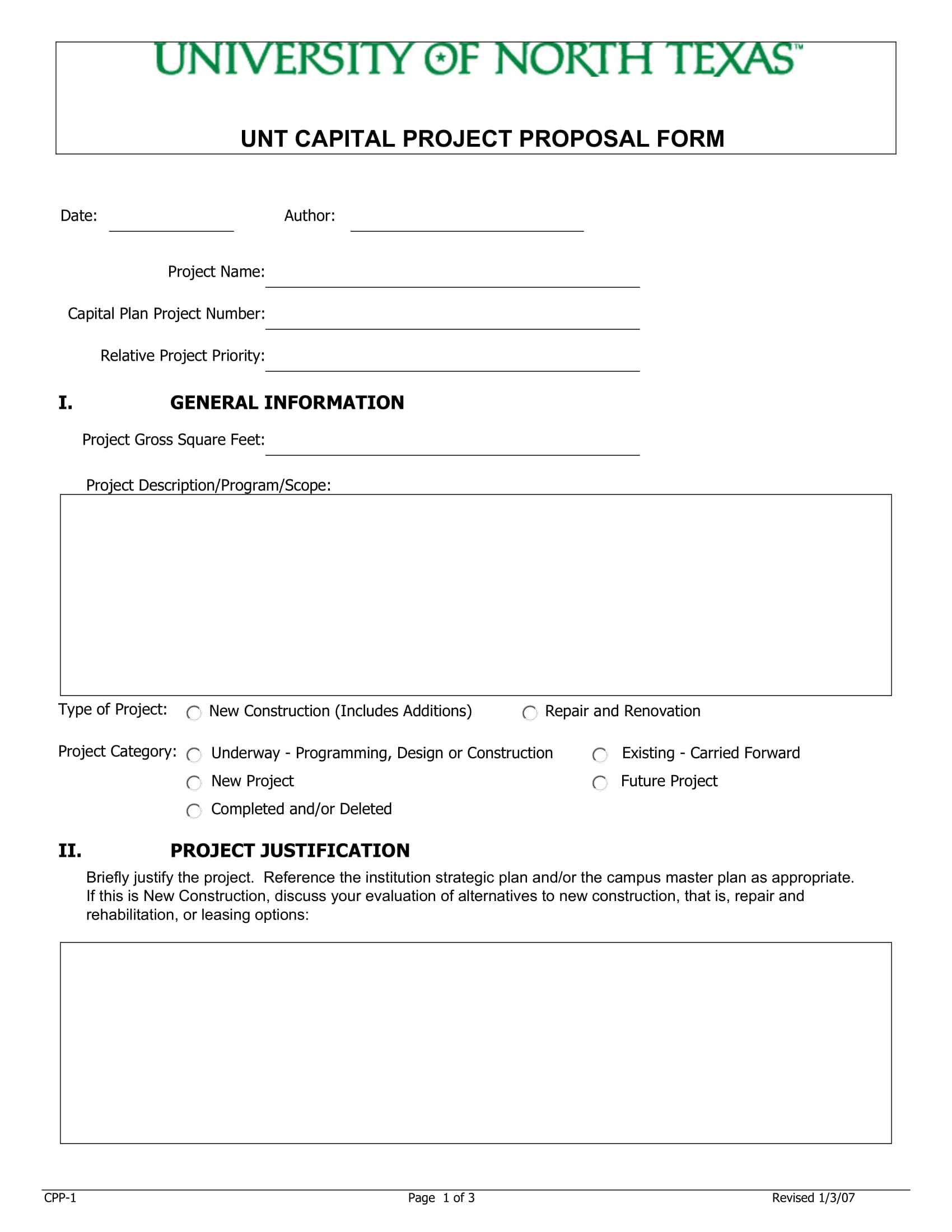9+ Capital Project Proposal Examples to Download
Every facility, building, and facility needs regular attention and upkeep to continue their operation year after year as originally intended. However, the cost of keeping up with the daily wear and tear caused by different factors such as extreme weather conditions and the constant usage by the people can rise above and beyond the original budget for such expense. Hence, capital project proposals are needed in order to create a definite budget on the expenditure of such assets and to have a systematized plan on raising such funds for the said assets.
This article provides you with a lot of information about capital project proposal that can surely help you whenever you want to create one.
Capital Project Approval Process and Proposal Example
Capital Project Grant Proposal Example
Capital Project Guideline and Proposal Example
What Is a Capital Project?
A capital project is a project that aids in the maintenance or improvement of a city asset or a government asset, which can be also called infrastructure. For a project to be included in the capital budget, it must meet at least one of the following requirements:
- It is a construction, expansion, renovation, or replacement project for an existing asset or facility and must have a total cost of at least $10,000 (this may vary according to the ordinance in a state) over the life of the project. The costs of the project include but are not limited to the cost of land, engineering, architectural planning, contract services, and other costs and expenses needed to complete the project.
- Alternatively, it can be a purchase of major asset with a cost of $50,000 or more (again, this may vary in different states) with a useful life of at least 10 years (some would require 13 years).
- Lastly, it can be a major maintenance or rehabilitation project for existing asset or facility with a cost of $10,000 or more (which may vary in different states) and an economic life of at least 10 years (this may vary as well).
Usually, these projects are funded by sources specifically set aside for capital purposes, such as proceeds of bond sales, long-term financing contracts, and other revenues of the city or municipality.
Classifications of Capital Projects
There are a lot of capital projects or improvements in a city, and they are classified as follows: preservation, programmatic, or grants. The different classes of projects help the decision-makers in reviewing and prioritizing different projects. The discussion of each class is presented below.
- Preservation projects. These projects are those that maintain, preserve, or extend the life of existing facilities or assets of a certain city or state and do not significantly change the program use of a that facility or asset. They have generally less effect on future operating programs and budgets. Examples of preservation project include upgrading utility systems, renovating building systems and finishes, and repairing streets.
- Programmatic projects. These are projects intended to achieve a programmatic goal such as changing or improving an existing space or creating a new facility through construction, lease, or purchase. Programmatic projects are less concerned with the extension of the life of the facility or asset. Usually, the projects range from building new facilities to significant renovation of existing facilities or assets. Furthermore, programmatic projects may also improve conditions and accommodate changes in services. Due to the large costs of these projects, a strategic plan is needed to identify the goals, strategies, and activities to minimize the costs.
- Grant projects. These projects provide capital appropriations to state, local, or community organizations for facilities or land. They are established in statute or have specific legislative provisions with regard to the distribution of the appropriated funds. Statutory grant programs must be submitted especially for ten-year capital budget request. It must be submitted within the limits established by statute. These projects should be linked to the agency’s strategic plan and to the statewide goals and objectives.
Capital Project Plan and Proposal Example
Capital Project Planning Proposal Decision Flowchart Example
Capital Project Proposal Approval Process
Detailed Capital Project Proposal Example
Narrative Justification for the Project
A narrative for each project included in the budget is required to justify the request for a certain budget of a city or state. A capital project request form must be filled out for each project and the following questions must be answered to evaluate the project:
- What is the proposed project? Describe the nature of the project.
- What business opportunity is being addressed?
- What kind of change in results can be expected for this proposal?
- Why is this necessary?
Additionally, information is required for these questions and items as well:
- Preservation projects: Describe whether this project can reduce the city’s or state’s maintenance backlog.
- Grant projects: Include statutory requirements and limitations for the grant program.
- Effects of non-funding: Describe the consequences to client groups of not funding the project being requested.
- How does the project support statewide results?
- Specific benefits of this project:
- Will this project reduce the maintenance backlog?
- Does this project change the condition of a facility that needs improvement into something adequate or superior project?
- What might be its economic impact?
- Does this extend the life of the facility?
- The impact of the change on agency clients and services:
- How will clients be affected if this project is funded?
- How will existing services be changed or improved by the project?
- The impact on other state programs or other units of government:
- How will other state programs be affected whenever this project will be funded?
- Describe the impacts of this project to other agency programs.
- The relationship, if any, to the state operating budget:
- What is the impact of this project on the state operating budget?
- Describe any changes in maintenance and operating requirements.
- Preservation projects: How much has the agency spent from its maintenance funds in the operating budget over the life of this facility or asset?
- Discussion of alternatives explored by the agency:
- Why do we consider this project as the best alternative? Briefly enumerate its pros and cons, explain why they were not selected, and explain why the recommended alternative was chosen. You may also include known risks of the options considered.
- What is the comparison in terms of cost estimate with this project to other projects of a similar nature?
- For projects with more than $5 million: Has the predesign been completed? What new information did this work reveal?
- Discuss the proposed funding options for this project:
- What is the agency’s proposed funding strategy for this project?
- What is the proposed funding option for this project?
- Are matching funds available in the federal or local?
- Are there conditions related to these matching funds that may influence the decision on whether or not to approve the project?
Capital Project Request Report
Each capital project must have a capital project request report completed apart from the requirements stated above. The report must include the following:
- Project identification – this includes the agency, the project title, and the project number.
- Project description – this include the project class (either program, preservation, or grant), type of project, agency priority, city and county, legislative district, project latitude and longitude, project published summary (summarized project description) and project description, and non-minor works subproject description.
If project classes apply, the information below must also be specified:
- Grants
- Is there a process and established criteria for evaluating projects?
- Provide a list of projects noting the city, county, and legislative district, if applicable.
- Provide the project latitude and longitude if applicable.
- What are the growth management impacts?
- Preservation
- Where is this project located?
- What are the growth management impacts?
- Programmatic
- For new facilities or assets, how does this fit into the agency’s master plan?
- What are the assumptions for needing this project?
- What are the growth management impacts?
There might be other elements that apply to your project such as the following. You must also provide the information for each of these elements.
- Operating impacts – You must list one-time and ongoing costs of the project and the year in which they will have an impact on the operating budget. It is better if you clearly identify the affected funds as well as the approximate amounts needed in the operating budget.
- Project funding by biennium – The amounts expended to date and the amounts needed in the future by biennium—prior biennium, current biennium, reappropriations, and new appropriations—must also be included in the report.
- Project statistics – This refers to the gross square feet, usable square feet, and escalated maximum allowable construction cost per square foot of a building project which must specified in the report.
- Project schedule – You must also clearly state the start and end dates of the pre-design, design, and construction phases of the project.
- Cost summary – A cost summary for the costs for consultant services, construction, and other expenses necessary for the completion of the project must also be included in the request report.
Molecular Engineering Capital Project Proposal Example
New Capital Project Proposal Example
UNT Capital Project Proposal Form Example
Capital Project Request Report for Stand-Alone Projects
For stand-alone projects, the following information must be provided:
- Overall summary of the project
- Scope and project description
- Justification for the project
- Proposed schedule for the project
- Implementation plan
- Site plans
- Cost estimate
Reasons for Capital Project Planning
- Allows effective time to plan for large projects
- Increases efficiency of engineering and budget efforts
- Ensures infrastructure is maintained and upgraded
- Helps the city or state coordinate outreach and construction
- Prioritizes capital construction and maintenance needs
- Helps the city forecast and coordinate long-term needs
To close, if you are considering to make a capital project proposal, you can refer to the discussions presented above as well as to the examples presented in the preceding section.



